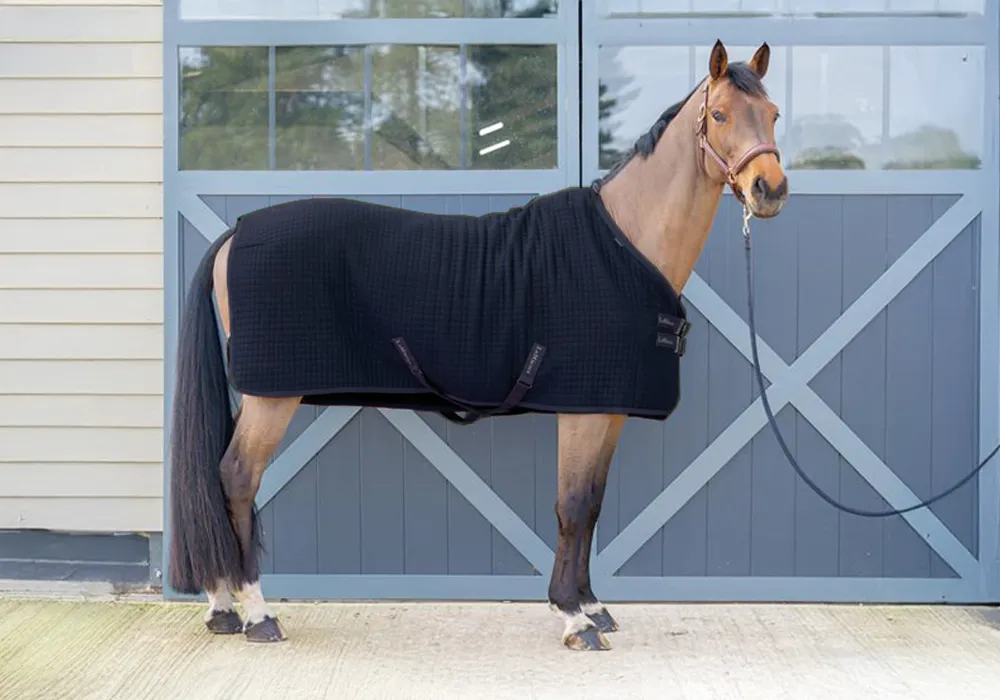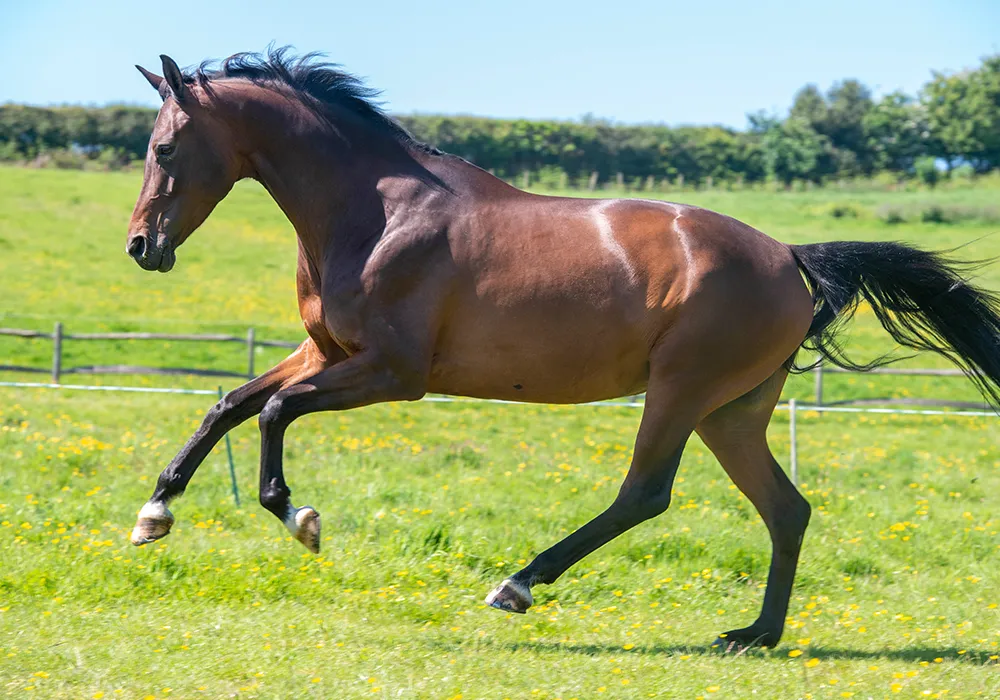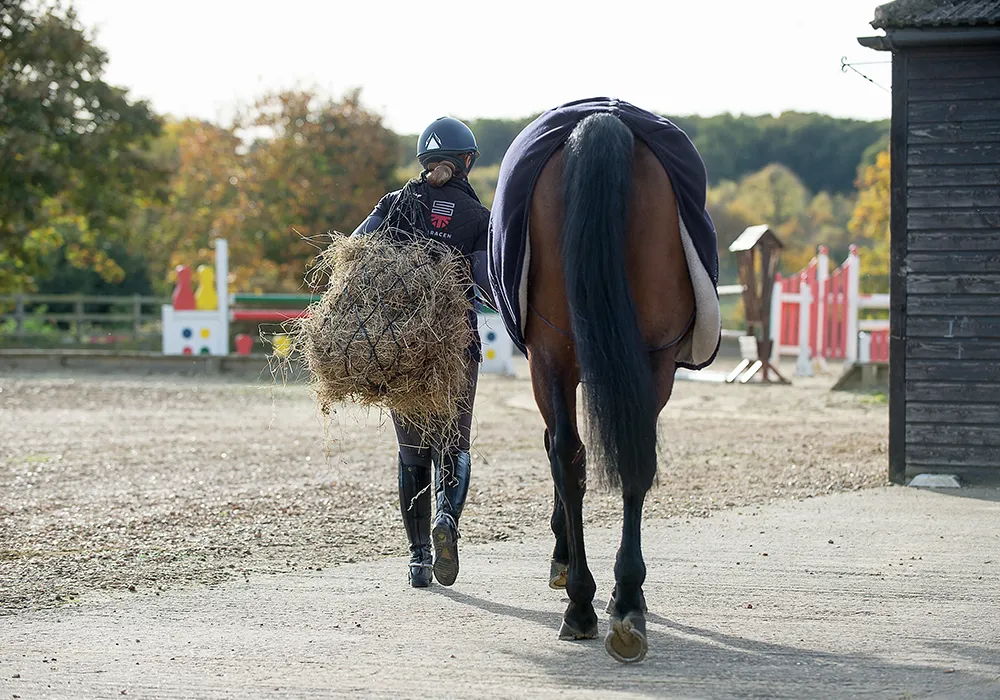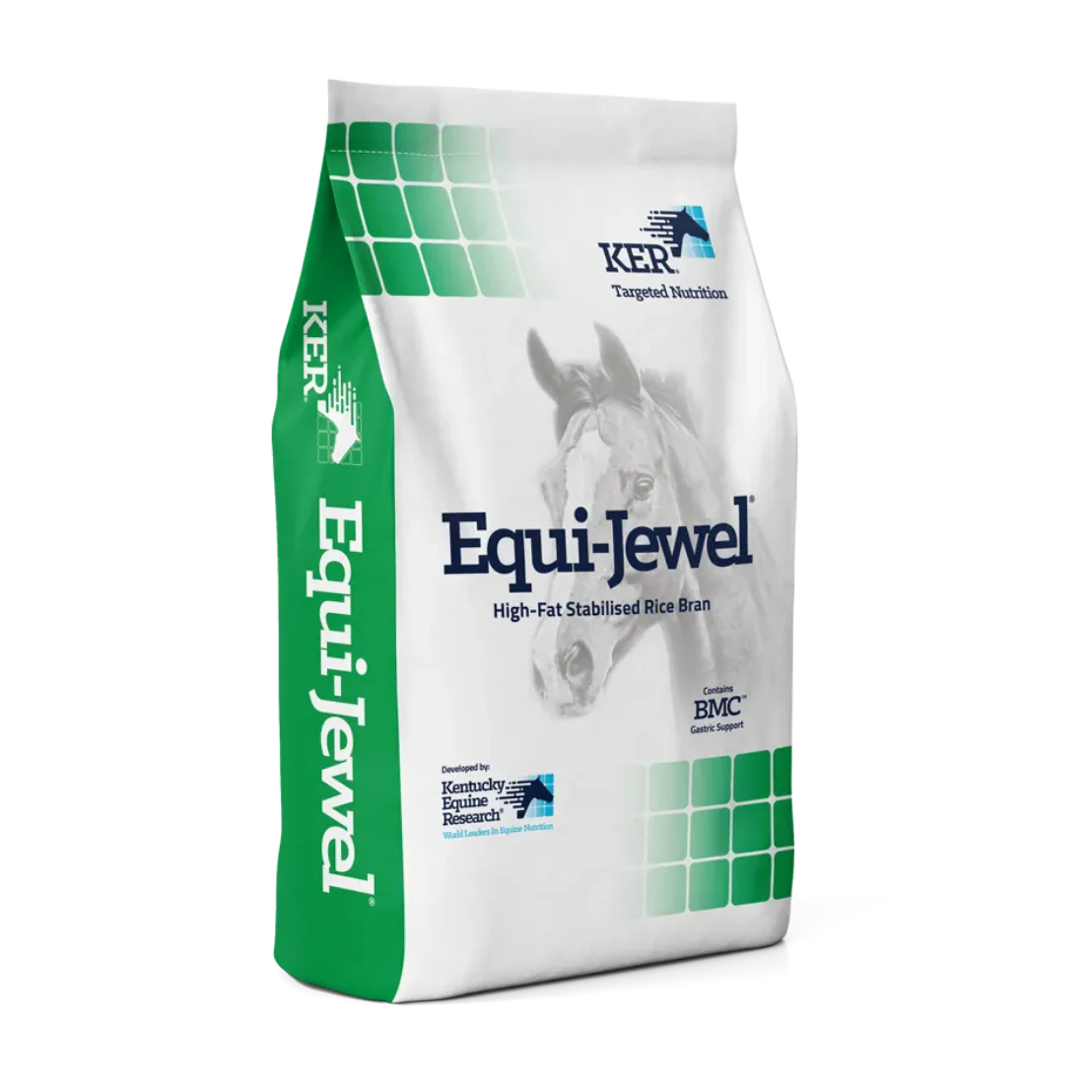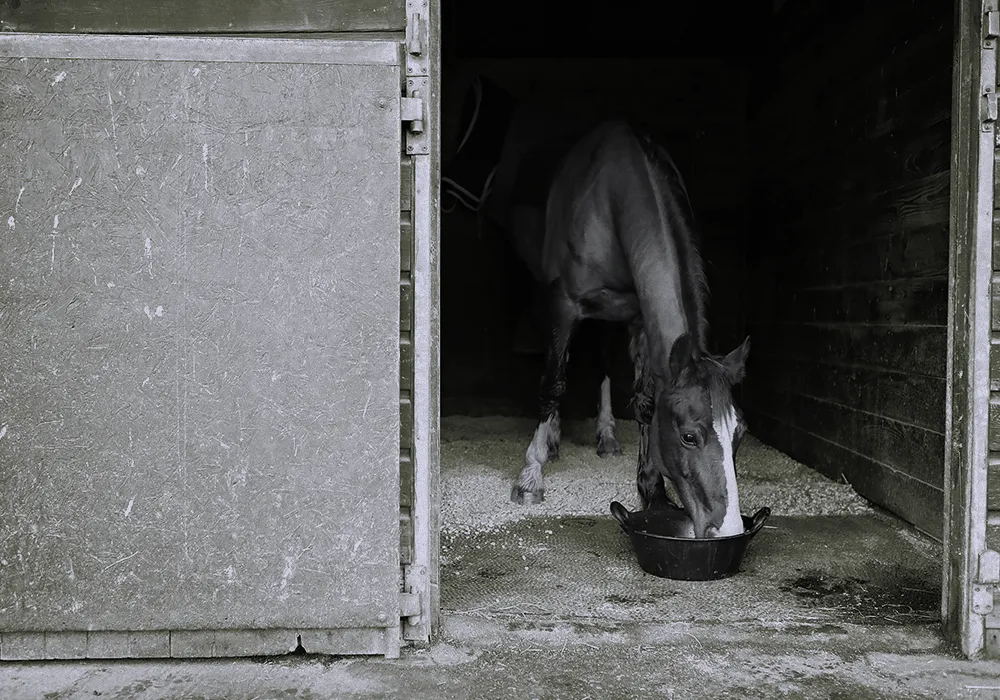Nutritional Management of Muscle Myopathies

There are some simple dietary adjustments that can put into place to help reduce the risk of tying-up, or other symptoms of muscle myopathies.
FORAGE
Good quality hay or haylage should form the basis of the diet and forage should ideally be fed on an ad-lib basis or, alternatively, intake should be aimed at 1.5 - 2% of body weight, i.e. a 500kg horse should receive a MINIMUM of 7.5kg of forage per day. Forage will pay a large proportion of the horse’s energy bill and help to reduce the reliance on feeding high levels of concentrate feed.
CONCENTRATE FEEDS
HORSE WITH NO HISTORY OF TYING UP
If exercise is severely restricted or stopped this may increase the risk of tying up, even if your horse has never had an episode before. In this case concentrate feed intake needs to be reduced without compromising vitamin and mineral intake.
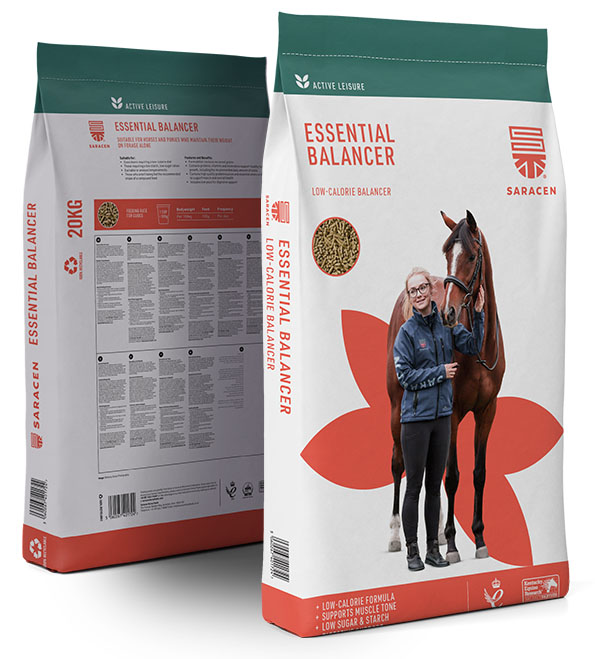
ESSENTIAL BALANCER will balance any diet, whether fed on its own, with straights or other compound feeds. Used within a normal feeding regime, it will result in lower levels of hard feed being needed. Essential Balancer concentrated ingredients, together with bio-available minerals, and yeast which helps to maintain microbial activity, resulting in maximum utilisation of hard feed and forage through optimal fibre digestion.
HORSE WITH A HISTORY OF TYING UP
Horses that have had an episode of muscle stiffness, increased muscle soreness or an episode of Tying-Up should be gradually introduced to a concentrate feed that is cereal free and therefore low in starch and sugar but high in digestible fibres and fat.
Saracen RE-LEVE®-MIX is specifically formulated to manage horses prone to compromised muscle function and is designed to form the sole concentrate feed. RE-LEVE®-Mix can be fed to all types of horse from those that are on box rest or in light work, up to those in full training. The level of RE-LEVE®-Mix fed should be gradually increased in conjunction with an increase in the level of exercise.
RE-LEVE®-MIX is a high-performance mix designed for horses that react to a cereal based diet that is suitable for horses at every level. Soya hulls, lucerne pellets and beet pulp supply oil and fibre as the energy sources, keeping starch to a bare minimum. It is fortified with a concentrated source of proteins, trace elements and yeast, as well as natural Vitamin E and selenium to assist normal muscle function.
When workloads increase and energy demands are higher, or your horse requires a large amount of help to increase his condition, RE-LEVE®-Mix can be topped up with EQUI-JEWEL®.
EQUI-JEWEL® is pelleted, high oil, stabilised rice bran supplement designed to increase the energy density of the whole diet, thereby decreasing the reliance on cereals in the diet. Research has proven its superiority in optimising performance. When substituted for vegetable oils in rations, horses had lower heart rates and subsequent shorter recovery periods
Some horses that are prone to Tying-Up are good-doers and cannot be fed the usual recommended ration of RE-LEVE®-Mix as this would be likely to encourage weight gain. For these horses we recommend SHAPE-UP™, a low calorie, low intake feed.
SHAPE-UP™ was designed to provide all the benefits of RE-LEVE®-Mix; cereal-free, low starch and low sugar; but in a low-calorie form. SHAPE-UP™ is a low starch, high fibre mix designed to provide a balanced diet at low intake levels, and to help maintain a normal, healthy metabolism. It can be used as a calorie-controlled ration for those prone to tying-up, laminitis, Equine Metabolic Syndrome or Cushing's to meet micronutrient requirements without excess sugar, calories, and starch intake.
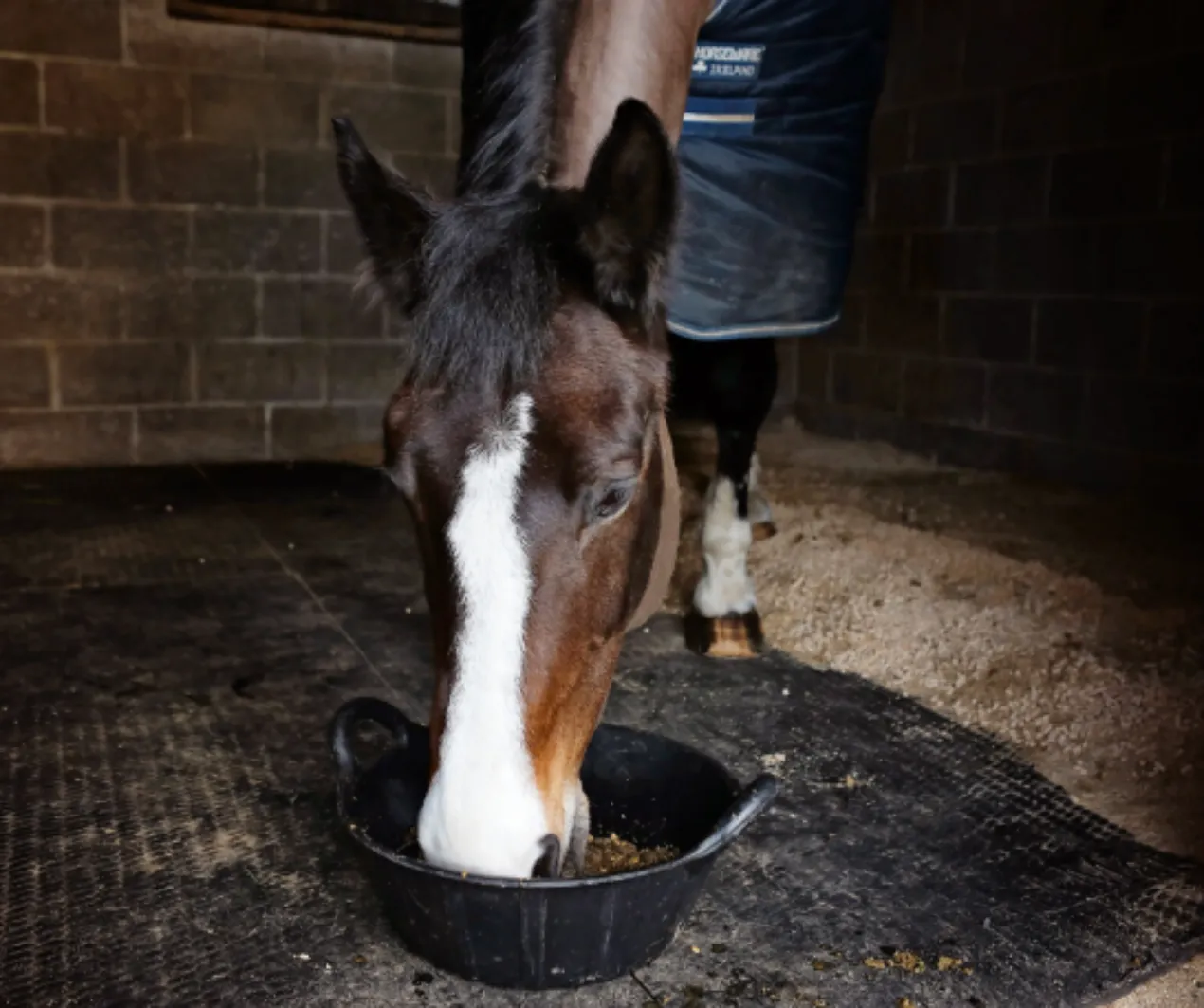
ADDITIONAL FEED OR SUPPLEMENTS
VITAMIN E
For horses with muscle disorders vitamin E can help to protect the muscles from damage and can reduce the risk of the horse tying-up. Research has shown that natural vitamin E is preferentially absorbed and retained by the horse compared to traditional synthetic sources. Nano E™ should be supplemented daily for 7 days following a Tying-Up episode and then used strategically 3 days prior to an intense work out, during and for 3 days post work out.
SALT
It is recommended to add salt (normal table salt) into the ration for horses that tie-up. This helps to replace some of the mineral salts that are lost through sweat and a decrease in important electrolytes can be a contributing factor to tying up.
During periods when the horse may be heavily sweating the use of specifically designed electrolyte supplement, such as KER Restore is advised. This will ensure that not only is the sodium and chloride replaced but also the potassium, magnesium, and calcium. An electrolyte supplement does not need to be used every day because potassium, magnesium and calcium are only lost in very small amounts and only need replacing, in addition to the horse’s usual ration, if the horse is heavily sweating. When using an electrolyte supplement ensure the horse has free access to clean, fresh water

WATER INTAKE
A decrease in water intake, and dehydration, can increase the risk of tying-up. Lack of water intake will rapidly dehydrate your horse and severely effect health and performance. Using a soaked feed such as RE-COVERY MASH will increase water intake and encourage further drinking to maintain optimal hydration.
RE-COVERY MASH®️ is highly palatable and contains a blend of ’super-fibres’ plus a source of electrolytes to aid re-hydration. The ‘super-fibres’ help to ‘top up’ the performance horse’s fibre and water intake and, together with electrolytes, helps to maintain optimum hydration and thirst response, during periods of travel, warm weather, sweating, intensive training and exertion. Re-Covery Mash also includes a live yeast to support gut flora and stabilise the pH of the gut, as well as vitamin E to support normal muscle function and recovery.
Top Tip: If your horse is fussy with water when you travel and compete start practicing at home by encouraging your horse to drink flavoured water, for example, flavoured with apple juice or mint. Alternatively, make sure that you have enough water containers on board to take enough ‘home’ water with you.
Need Guidance?
If you would like any further information on feeding your horse or pony please feel free to contact our nutritional team on +44 (0)1622 718 487, email info@saracenhorsefeeds.co.uk or fill out our Feed Advice Form.
